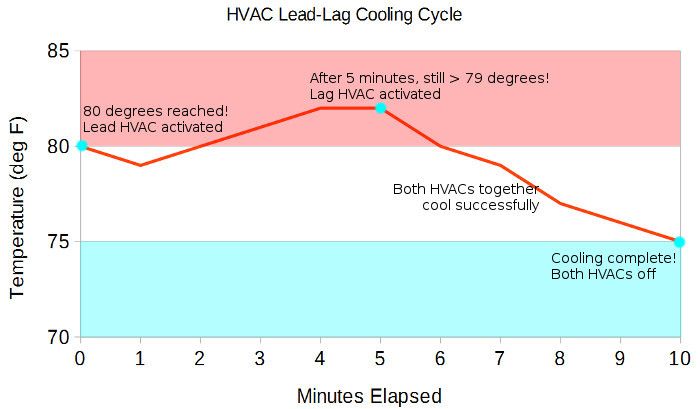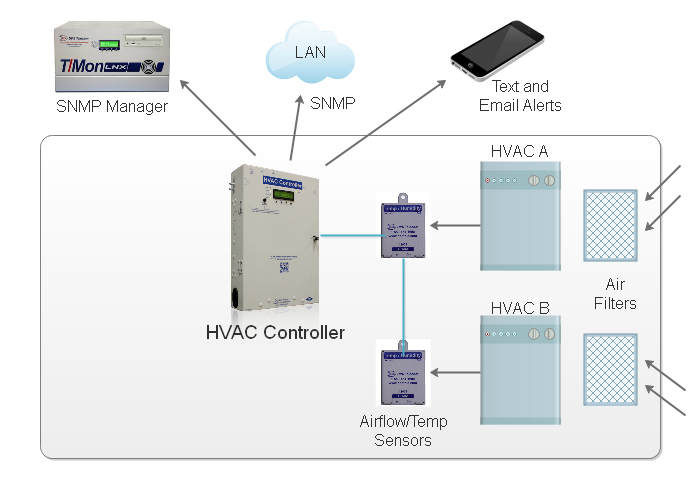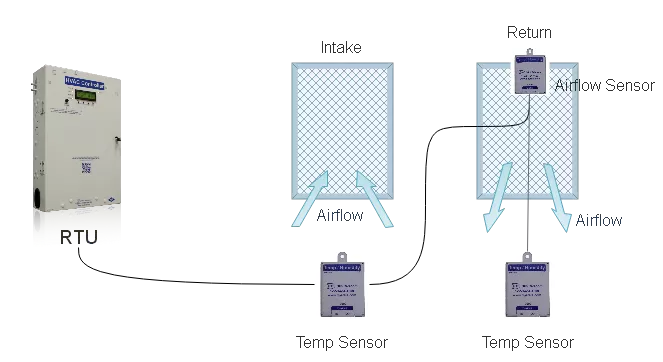Download our free Monitoring Fundamentals Tutorial.
An introduction to Monitoring Fundamentals strictly from the perspective of telecom network alarm management.
1-800-693-0351
Have a specific question? Ask our team of expert engineers and get a specific answer!
Sign up for the next DPS Factory Training!

Whether you're new to our equipment or you've used it for years, DPS factory training is the best way to get more from your monitoring.
Reserve Your Seat TodayYour HVAC system (Heating, Ventilation, and Air Conditioning) plays a critical role in keeping your remote sites online. It fights the damaging effects of an outside climate that may be too hot, too cold, too humid, or sometimes even not humid enough.
If your HVAC goes down, it generally isn't long before you'll encounter several serious problems that can take down a good portion of your network. This is where the HVAC Controller comes in. It monitors your HVAC for failures.
Before committing to anything, though, it's important to know how this equipment can benefit you. That's why we'll take a look at how we can calculate your HVAC Controller ROI.
You spend a lot on your HVAC systems. Your budget is weighed down by:
Direct electricity expense
Replacement cost for end-of-life HVACs
Maintenance visits to replace end-of-life HVACs
Maintenance visits to change filters
Emergency responses, equipment damage, and service outages from HVAC failure
All of these factors make HVACs a major expense, which means there is major ROI to be achieved through even partial improvements in HVAC management. It doesn't matter whether you think about it or not. You're losing money every day you fail to implement smart HVAC control.

You don't need an incredibly complex HVAC controller to boost your efficiency and save budget dollars, but any good HVAC controller must do 4 key things well:
It must balance multiple HVACs in a lead-lag configuration to balance the workload.
It must be remotely accessible (via web interface, SNMP, etc.).
It must monitor temperature (inside and out) & airflow at multiple locations.
It must log a complete timestamped history of sensor readings and HVAC state to support efficiency analysis.

Every organization and every remote site has different ROI potential. There are many different ROI factors in play, and the total of all of them is your total ROI.
The 8 key HVAC ROI factors:
Electricity savings from tolerating warmer temperatures
With the HVAC Controller's extensive temperature logging, it's possible to chart your site's warming rate at various temperature levels.
Due to Newton's Law of Cooling, the first few degrees you can shave from your HVAC settings will save you the most electricity. Once you determine that you'd like to make a change to your cooling/heating settings, you can do so remotely over LAN without visiting the site. On the rare times when someone DOES visit your site, a simple "Comfort" button allows that visitor to temporarily drop the temperature to something more comfortable for a human.
Because "Comfort Mode" automatically times out, it's impossible to waste power by forgetting to restore the original temperature settings.
HVAC equipment savings by reducing total cycles
Any experienced HVAC technician will tell you that a unit's lifespan isn't just about runtime. Just like with your car, starting and stopping generates more wear-and-tear than continuous running.
By reviewing logs from a smart HVAC controller, you can find opportunities to widen your cooling window. Allowing the temperature to rise higher before firing up the HVACs, then running them for longer, means that you'll have fewer cycles per day. This extends your total years of service after purchasing an HVAC. The lead-lag function of a controller makes sure that the required cycles are balanced across all units at the site.
Reduction in required site visits
When do you visit a site to replace the HVAC air filter? When do you perform maintenance? Is it just a simple schedule (necessarily designed to be EARLY rather than just-in-time) that you use?
A good HVAC controller with air-flow sensors lets you actually see the state of your air filters. If they're not clogged, don't visit. If you HVAC is functioning nominally, save your time to visit a site that actually needs help.

Minimization of unexpected HVAC failures
When you use a smart controller, multiple HVAC units will rotate through lead and lag roles, balancing the load across all of them. Rotation forces detection of HVAC-unit failures, so you'll know promptly if you've lost one.
Without HVAC rotation, you might be "running on your spare tire" and not know it until your lead HVAC fails and you suddenly realize that ALL of your HVACs are inoperable. There's little that's more expensive than a sudden emergency response and a high chance of equipment damage.
Fire-damage mitigation
When you attach a smoke detector to the appropriate discrete input, the HVAC Controller will be enter "Smoke Mode" whenever smoke is detected. It will deactivate all HVAC units to prevent fanning the flames of a fire.
A manual override is possible from the front panel once the responding technician determines that no fire is present. This simple function could potentially save an entire site from burning.
Fast and easy installations
The HVAC Controller can be pre-configured at the factory with your desired cooling & heating temperatures. This eliminates the need for your installers to use a PC, as the HVAC unit count and alarm polarities can be set using the front-panel buttons and LCD display.
Conduit knock-outs and grounding lugs are available in multiple locations to make installation faster and easier.
Eliminating the need for a dedicated RTU at some sites
Monitoring temperature, smoke, and other values offers the same situational awareness and risk mitigation as a standalone RTU. At small or medium sites, you might not need a separate RTU at all.
Public-Relations Value of "Green" Efficiency
If you're in an industry (or perhaps at a government agency) where it looks good to be "green", it's actually possible to gain customers and goodwill through superior HVAC management.
Obviously, it's impossible to give anyone an exact figure without having a history of sensor data from your site.
The best way to REALLY know your HVAC ROI is to deploy a single HVAC Controller at a single one of your sites. Log your sensor data for just a few weeks, then we will calculate a precise ROI estimate for you.
If you like what you see at your field trial, then you can launch a wider roll-out. If not, there's always our 30-day, money-back guarantee.
Call or email us today and we can talk more about your HVAC Controller field trial.